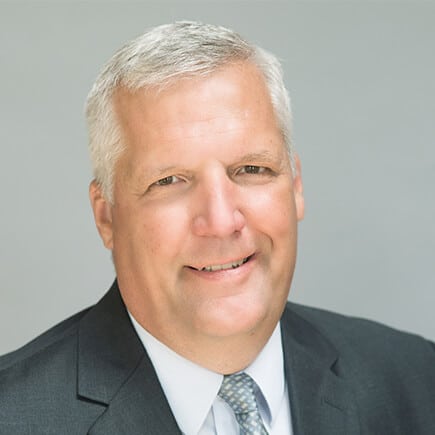
It’s a lot more than you may expect, even for billionaires!
Are you wealthy yet?
Chances are, the answer is no.
On average, Americans think you need an investable net worth (i.e., excluding equity in your home) of $2.2 million to feel wealthy.
According to DQYDJ.com’s net worth calculator, just 7 percent of Americans have that much.
So, not knowing anything about you, chances are better than 13 in 14 that you’re not there yet.
What We Wonder About the Wealthy and Why
If you’re not wealthy, you might be wondering:
- With a lot of money, there would be many things you wouldn’t worry about, right?
- However, what would you still stress over despite the money? What new stressors would you face?
- What would you spend on? Travel? Luxury homes? Fancy cars?
But beyond those, the more interesting questions have to do with how the wealthy reached that status and, by implication, how can you do the same.
Before we go there, here are a few classifications of wealth…
According to Wealth and Society, while there aren’t any legal definitions of wealth, there are some widely accepted ranges:
- High Net Worth Individuals (HNWI) have an investable net worth of $1 million to $5 million.
- Very High Net Worth Individuals (VHNWI) have an investable net worth of $5 million to $30 million.
- Ultra-High Net Worth Individuals (UHNWI) have an investable net worth above $30 million.
With that out of the way, how do the wealthy become wealthy?
You’d think the top factor people would cite is getting a big inheritance.
You’d be wrong.
According to wealth manager Empower, (based on a study of accounts worth $1 million to $5 million as of 4/1/2022) only 29 percent, fewer than three in ten, believe you need to inherit or get help from family.
The top six factors most people say help you become wealthy are:
- Paying attention to your finances (65 percent)
- Making a lot of money (64 percent)
- Having multiple income streams (63 percent)
- Investing across multiple asset classes, i.e., diversifying investments (59 percent)
- Being frugal (57 percent)
- Having real estate investments (55 percent)
I’d say these are on point, but I’d add a few:
- Being disciplined (i.e., delaying gratification so you can invest more).
- Having strong communication skills (helps advance in almost any career).
- Being curious (results in pursuing education, which helps acquire knowledge and, hopefully, wisdom).
- Taking advantage of opportunities, including tax breaks and 401(k) employer matches.
That last point leads us to our topic of the day…
How Much of the Wealthy’s Net Worth Is in Their Retirement Accounts?
Unsurprisingly, Empower’s data show this fraction changes with age.
Why unsurprisingly?
Because the Internal Revenue Code limits how much we can contribute annually to our IRAs, 401(k) plans, etc. Older people have had more years to contribute and more years for those contributions to generate investment returns.
- HNWIs in their 20s, with a median net worth of $1.5 million, have just 22 percent of their net worth in their retirement accounts.
- In their 30s, with a median net worth of $1.6 million, that fraction increases to 38 percent.
- In their 40s, median net worth of $1.7 million, with over 54 percent in retirement accounts.
- In their 50s, the median net worth is $1.9 million, and the fraction keeps increasing, to 62 percent.
- In their 60s, the median is $2.0 million, and the fraction peaks at 63 percent.
- In their 70s, with most of them likely retired and drawing down their retirement accounts and net worth in general, the median net worth dips slightly, and the retirement account fraction drops to 56 percent. Required Minimum Distributions (RMDs) start biting in your early 70s, forcing you to take money out of retirement accounts (and pay taxes on the prorated portion due to investment returns) whether or not you need it. This likely explains why the retirement account fraction starts dropping here.
- In their 80s, median net worth drops to $1.9 million and the fraction in retirement accounts is just 47 percent. By their 80th birthday, RMDs impact all of these people, and to a greater extent.
- Interestingly, the median net worth for people in their 90s increases again, to $2 million, but the fraction in retirement accounts drops to a far lower 21 percent.
The average retirement account fraction for HNWIs across all age groups was over 54 percent.
How about the ordinary man or woman in the street?
According to the Pew Research Center, for the general public, retirement accounts comprised a median of just 27 percent of the net worth of households where at least one person owned a retirement account.
Obviously, for those who did not own any retirement accounts, the fraction was 0 percent.
How About the Uber-Wealthy?
Empower’s data show the median balance of retirement accounts peaks for HNWIs in their 60s, at $1.3 million.
Since HNWIs have up to $5 million, having over a million in retirement accounts can be a sizable chunk of their wealth. For HNWIs at the lower end of the scale, it could be the overwhelming majority of their wealth.
But what if we look at UHNWIs?
Surely, if you have tens of millions, let alone hundreds of millions or billions, retirement accounts can only be a small fraction of wealth.
Right?
Not necessarily.
According to ProPublica, some UHNWIs, tech billionaire Peter Thiele being the poster child, built up insane fortunes in their Roth IRAs.
Specifically, Thiel’s Roth IRA was worth over $5 billion (yes, that’s ‘billion’ with a ‘b’!). With a total net worth of about $6.8 billion, that Roth account comprised over 70 percent of Thiele’s net worth!
Says ProPublica, “Using stock deals unavailable to most people, Thiel has taken a retirement account worth less than $2,000 in 1999 and spun it into a $5 billion windfall… a small number of entrepreneurs, like Thiel, made an end run around the rules: Open a Roth with $2,000 or less. Get a sweetheart deal to buy a stake in a startup that has a good chance of one day exploding in value. Pay just fractions of a penny per share, a price low enough to buy huge numbers of shares. Watch as all the gains on that stock — no matter how giant — are shielded from taxes forever, as long as the IRA remains untouched until age 59 and a half. Then use the proceeds, still inside the Roth, to make other investments.”
Clearly, whether at the million-dollar level or the multi-billion-dollar level, using legal tax breaks and sophisticated strategies can provide a major boost in building wealth, and even more so in passing it on to the next generation.
The recent SECURE 2.0 closed at least one of these loopholes by requiring non-spousal inheritors to drain inherited retirement accounts within 10 years of the bequest.
How Can You Take Advantage?
First and foremost, if your employer offers a 401(k) account with any matching contributions, contribute to that plan at least enough to max out the employer match.
If you can avoid it, never leave free money on the table!
Employer match is an immediate, guaranteed, 100 percent return!
Then, to the extent your income and expenses allow, max out your contributions to any tax-advantaged plan(s) you can access, such as:
- Health Savings Accounts (HSAs): These have a triple tax advantage — tax-deductible contributions, tax-free growth, and tax-free withdrawals if used for qualified medical expenses. However, you can only contribute to an HSA if your health insurance plan is a qualifying high-deductible plan. If you do qualify, note that you’re not locked into the HSA plan provided through your employer. You can (and should) compare that plan with others (I use Optum Bank’s HSA, but that’s not an endorsement — do your own due diligence when choosing).
- Roth IRAs: If your income is under the IRS limit (Modified Adjusted Gross Income, or MAGI, of up to $218k for married filing jointly in 2024, phasing out by MAGI of $228k), you can make after-tax contributions of up to $7000 (in 2024) with an additional $1000 if you’re older than 50 (you can contribute to both a Roth IRA and a traditional one, see below, in the same year, but the contribution limit is shared). Withdrawals (after age 59.5, and before in limited cases) are tax-free. You can also draw any contributed amounts tax- and penalty-free at any time once the account has been open for at least five years. Note however that once you’ve withdrawn those amounts, you can’t put them back in.
- Traditional IRAs: If your income is below the IRS limit (MAGI up to $123k for married filing jointly in 2024, phasing out by MAGI of $143k), you can make tax-deductible contributions of up to $7000 (in 2024) with an additional $1000 if you’re 50 or older. However, withdrawals are taxed as regular income even for capital gains within the account.
- Roth 401(k), 403(b), and similar plans: Contributions to these plans are in after-tax dollars, just as is the case for Roth IRAs, however, there are no income limits. You can contribute up to the lesser of 100 percent of your wage income or $23,000 for 2024, with a $7500 catch-up contribution if you’re 50 or older (you can contribute to both a Roth plan and a traditional one of the same type, but the contribution limit is shared). Note that if you have access to more than one type of plan, e.g., a 403(b) and a 457(b), you can “double up” the limits and max out both.
- Traditional 401(k), 403(b), and similar plans: Contributions are tax-deductible with no income limits, but withdrawals (after age 59.5 to avoid penalties) are taxed as regular income. Contribution limits are the same as for the Roth flavor of these accounts. Here too, if you have access to different plan types you can contribute up to the limit for each.
- Cash balance plans: These defined-benefit plans are less common than defined-contribution plans such as the 401(k). However, depending on your age and income, you’re allowed to make deductible contributions of $300k a year or more!
You may have access to other employer plans such as SIMPLE IRAs, SEP IRAs, Keogh plans, etc., in which case you may want to consider maxing those out.
The Empower survey found that while 59 percent of respondents listed diversifying investments as one of the most important factors in building wealth, only 46 percent listed maxing out their retirement plans.
This is surprising since taxes cause a relentless drag on your taxable portfolio returns, so investing within tax-advantaged plans can significantly boost your results.
In addition to that, making it harder (and more expensive) to access your money in retirement accounts before you retire makes it less likely that you’ll be tempted to rob your future self of that potential wealth.
When choosing between a Roth account and a traditional one of the same type, it’s usually more beneficial to use the traditional account if you expect to be in a lower tax bracket once you retire.
A Roth account is generally better if you expect to be in the same or higher tax bracket in retirement, or if you expect the account to grow explosively (as was the case with Thiel’s Roth IRA).
Can You Ever Have Too Much in Retirement Accounts?
It may seem like an odd question, and indeed, as Rob Duncan, Founder of Global Impact Wealth Management says, “For most Americans, having too much of their net worth in retirement accounts isn’t a major concern. Debating it reveals a significant level of financial success and sophistication.
“In reality, many people stop contributing because they must, due to financial hardships, job loss, or disability. However for the minority who have the luxury to consider this question, you might stop funding retirement accounts if you’re so well off that any additional savings (or tax breaks from these contributions) aren’t needed to meet your future financial goals, or to allow more tax-sensitive transfer of assets to subsequent generations due to a potential step-up in basis at death, rather than bequeathing qualified assets that are taxed as ordinary income.
“In the latter case, if Roth contributions to a retirement plan are allowed, that would be a better option than ceasing contributions altogether. Having too much in your retirement accounts is ‘so much of a blessing that it becomes a curse’ issue that most people would love to wrestle with.
“That being said, you enter retirement with all (or a significant amount) of your net worth in qualified retirement accounts, it leaves limited flexibility as to the taxation of withdrawals. All retirement income will be taxed at ordinary income rates, rather than the potentially lower capital gains rates.
“For example, a couple who earns $250K a year in ordinary income would be in the 24 percent federal bracket, whereas $250k generated through long-term capital gains would be taxed at the 15 percent rate. Ongoing active tax-loss harvesting strategies can reduce the burden further with some studies showing increased ‘tax alpha’ of 0.5 to 3 percent annually, depending on the year.
“Ensuring a sound strategy requires close coordination between clients and all their trusted advisors (financial planners, tax professionals, and estate attorneys).”
Many financial professionals share this concern about taxation and flexibility of retirement withdrawals.
Ralph Adamo, CEO & Founder of Integrity Wealth Management says, “Once you have enough to sustain your retirement lifestyle, consider diversifying across tax treatments. Retirement accounts offer tax benefits but can restrict access and flexibility due to penalties on early withdrawals. Balancing these with more liquid investments helps you achieve greater financial freedom. Having too much of your net worth in retirement accounts may expose you to future tax rate uncertainties and forced distributions that might not align with your needs.”
Michael Rosenberg, RFC, CPFA, Managing Director and Founder of Diversified Investment Strategies, LLC, agrees, “With wealthy clients, money in retirement accounts can be a double-edged sword. Yes, the tax deductibility is attractive, but having too much money in these accounts can lead to higher taxation in the future.
“With the US government spending so much money, you need to ask if your current tax bracket isn’t lower than it’s likely to be when you draw qualified income in retirement. If you believe tax rates will increase, putting money into a qualified retirement plan may not be justifiable. In my practice, we implement strategies for HNWIs to have three sources of future income – capital gains, tax-free income, and (hopefully the smallest portion) qualified tax-deferred retirement accounts.”
Brian Skinner, CFP®, Skinner Wealth Strategies, shares, “It’s ok, if not desirable, to have retirement accounts make up most of your net worth, but it doesn’t end there. The key is to diversify from a tax perspective and use Roth 401(k) plans or IRAs to give you tax planning flexibility when you start making withdrawals.“
Important Caveats
While maxing out your HSA and retirement contributions can help you build significant wealth by the time you retire, make sure you leave enough money in non-retirement accounts to handle your pre-retirement needs.
These may include:
- Covering your ordinary daily, weekly, monthly, and annual expenses.
- Building an emergency fund sufficient to cover 3–12 months’ expenses.
- Saving for a down payment on a home.
- Buying a car (or two) if and as needed.
- Funding your kids’ college educations.
You want to avoid having all your money tied up in retirement accounts where you may be assessed a penalty beyond any taxes owed should you need to spend some of it before you’re 59.5 years old.
Paul Monax, CFP®, founding advisor at Agile Wealth shares an example of the possible consequence of overdoing retirement account contributions, “I once had a 51-year-old client who had a net worth of $5 million. Of that net worth, about $2 million was in real estate – their family home and some rental properties. The remaining $3 million was in mutual funds and other liquid assets, but over 90 percent was in retirement accounts, leaving only $300,000 available for immediate use. He wanted to retire early and since he was only 51, he couldn’t access the retirement accounts without early withdrawal penalties. Based on his $5 million net worth, you might think there should have been no problem with him retiring early, but the distribution of those assets, with just $300,000 available made the early retirement he envisioned impossible.”
Regarding HSAs, these were intended to let you set aside pre-tax dollars so you can cover medical costs without paying tax on that money. However, if you can, you could do as I do — contribute the maximum allowed, invest it in mutual funds within the HSA, and let the money grow tax-free until retirement.
Unless you die young and healthy, you’ll almost certainly have lots of medical expenses in retirement, making a long-term HSA investment an ideal way to cover healthcare costs in your old age.
The Bottom Line
For the average Joe or Jill, assuming they even own a retirement account, the median retirement account as a fraction of net worth was just 27 percent.
The wealthy keep a far larger fraction of their wealth in retirement accounts.
For HNWIs, this fraction grows from 22 percent in their 20s until peaking at 63 percent in their 60s, and then dropping back to 21 percent by the time they’re in their 90s (due in large measure to RMDs forcing them to gradually empty their retirement accounts).
For UHNWIs, this fraction could even be over 70 percent (as was the case with Peter Thiele’s Roth IRA)!
If there’s one lesson you learn from the wealthy, let it be this — tax breaks are there to be used — if it’s legally allowed and you can afford to take advantage, do it.
Your future self will thank you.
However, as Jorey Bernstein, Executive Director, Wealth Manager, and Founder, Bernstein Investment Consultants says, at some point you may want to stop, “For affluent clients, retirement accounts can provide significant tax advantages, but there are limits to consider. Generally, we recommend maxing out available contributions each year to take full advantage of tax-deferred growth. However, there can be a point where lack of access and estate planning concerns outweigh the incremental tax benefit.
“Once total retirement assets approach $10-15 million for a married couple, the additional tax deferral may not justify tying up more funds with retirement account restrictions and RMDs. At that level of wealth, having too much in tax-deferred accounts can create over-concentration risk, liquidity issues when needing funds before age 59.5, and potentially higher taxes in retirement due to RMDs.
“The ideal balance allows using the annual contribution limits while maintaining diversification across taxable, tax-deferred, and tax-free investments based on the client’s overall net worth, age, income needs, and legacy goals.”
Are You Ready to Hire a Financial Advisor?
You’ll find a growing number of financial advisors featured on Wealthtender. You can search based on the areas of specialization most important to you and where they’re located, or browse our financial advisor directory for more search options to find advisors who may be a good fit for you.
Find Your Next Financial Advisor on Wealthtender
📍 Click on a pin in the map view below for a preview of financial advisors who can help you reach your money goals with a personalized plan. Or choose the grid view to search our directory of financial advisors with additional filtering options.
📍Double-click or pinch pins to view more.
Disclaimer: This article is intended for informational purposes only, and should not be considered financial advice. You should consult a financial professional before making any major financial decisions.

About the Author
Opher Ganel, Ph.D.
My career has had many unpredictable twists and turns. A MSc in theoretical physics, PhD in experimental high-energy physics, postdoc in particle detector R&D, research position in experimental cosmic-ray physics (including a couple of visits to Antarctica), a brief stint at a small engineering services company supporting NASA, followed by starting my own small consulting practice supporting NASA projects and programs. Along the way, I started other micro businesses and helped my wife start and grow her own Marriage and Family Therapy practice. Now, I use all these experiences to also offer financial strategy services to help independent professionals achieve their personal and business finance goals. Connect with me on my own site: OpherGanel.com and/or follow my Medium publication: medium.com/financial-strategy/.
Learn More About Opher

























